Remember those essays you had to write in grade school? Well I do even if you don't. In honor of that memory, I am going to write:
What does the EarSonics SM3 mean to me?
Back in March I was going to order the EarSonics SM3 based off the few things I have read about them, even though it wasn't much. But then something stopped me. Could they really be that good, and the shipping cost was as expensive as my gateway IEM! I was not sure what exactly to expect, but did have some insider info from shigzeo, which was all positive. But were they going to be UM3X like and lacking they dynamics and excitement I want, especially for the price?
Well, a month went by and search reminded me of the SM3, and I realized I had to have them. So I placed my order. I got the FX700 two days before the SM3. Talk about too many toys at once. Upon opening the SM3, I was surprised that there was only one type of tip (Franck is going to start including a 2nd type of tip). And to be honest, at first, I was thinking "what the hell did I just spend $425 on?" Burn in, tips, getting used to the sound sig, who knows. But they sound so much better now, and clearer also.
What am I hearing? This excerpt pretty much sums it up quite well (thanks
MayaTlab via KLS)
Quote:
Originally Posted by MayaTlab 
I don't know about the UM3x availability in the USA.
For the Earsonics, you'll have to import them from their website :
EarSonics ® / Ear Sonics in-ear monitors / custom earphones / in ears / ear monitors / earplugs / earmolds.
Don't be afraid because of the translation - yeah, it sucks. Trust me, they're very serious and the customer service is fantastic.
Also, their price is 350 WITH TAX, and probably if my mathematical skills aren't that terrible around 290 without - still very expensive in dollars (387 + possible customs taxes).
However, I'd wait if I were you, because there are only a handful of head-fi feedbacks about them. The French forums are just raving about them about pretty much everything, but it would be nice to have different points of view. However so far I've read the following comments :
- Better details and instrument separation than the UM3x (that must really be something then)
- Soundstage as wide as IE8
- Superb imaging and depth
- "Spot on" EQ - ie very flat and neutral (though I bet we're talking about the Hi-Fi side of neutrality, that is to say rather warm but not too much)
- Very tight and controlled bass (at least tighter than IE8), with thunderous and fast impact. I haven't read anything about its texture. They have less bass quantity than the IE8, but I cannot say in comparison to the UM3x. I bet given my SM2 experience that they'll slide in between the SE530 and UM3x in terms of quantity.
- Superb mids (very likely to be the best of the current universals, given Earsonics' pedigree), and super extra ultra "liquid".
- Airy and extended treble
- Effortlessly dynamic - they sound "big", "powerful"
They also have the exact same ergonomics as the UM3x, but there isn't a version with removable cables.
On the one hand, that sounds too good to be true (hence my recommendation to wait a bit), but on the other hand, Earsonics has been around for years, is producing a two-way three drivers custom that goes head to head with the JH13 (and was designed more than four years ago) and is a very serious company - so they're totally able to pull this off.
|
Well, OK, so I stole a post from someone else! At least I cited the source! But seriously, IMHO these are the best in-ear monitors I have heard, bar none (with the exception of possibly the UE11 universal I heard for 20 minutes at Can Jam, but these gave me the same amazed feeling). So, lets see...
- Equal to or better than IE8 soundstage width (my IE8's were lost in the mail, so I can't compare directly)
- Equal to or better space/imaging/instrument separation than the UM3X
- More detail than the dynamics I have heard, and at least as much as the other BA's I have heard (more comparisons need to be done)
- Best of the dynamic IEM like bass impact
- Enough speed for anything I have thrown at them
- Extended treble
- Liquid mids
- e-Q7/GR8 transparency
- Dynamics and excitement when the song calls for it
- Best I have heard balance across the spectrum from bass through the treble
Did I miss anything?
So, because of what I am hearing, my other high priced IEMs are becoming expendable and unused, which means I am probably going to sell many of them, if not all after I finish my comparisons. That is why the SM3 is the "most affordable high priced universal IEM!"
So, I sold: CK10, GR8, FX700, e-Q7, PR1 Pro, Mingo WM2 Gold & Silver and bought the Tesla T1...and I don't miss any of what I sold!
And a note on the sound. While I don't have the others to compare with (still have the CK90Pro, Copper, and RE252 for backup purposes, and out of being too lazy to sell them), I think the SM3 has grown on me/improved even more than when I did my comparisons. Now there are many other owners that are agreeing with my findings. Go get them, you won't be disappointed (after 2 weeks with them).

A note on the SM3 vs. the T1...the SM3 can present a wider space than the T1 with some songs, and has a more true to the recording sound than the T1, as it varies widely in presentation depending on the recording. While I have no complaints about the T1, other than really needing another amp for it, the SM3 can do things the T1 can't. But then the T1 does present things differently and places things in a way that I can hear the individual notes and noises better sometimes. This is due IMO to the T1 having a more constant soundstage size.
Comparisons:
My results from A/Bing my headphones. I selected the best tips for each, used a few sources and my test tracks, which I am familiar with.
SM3 vs.
FX700:
Bass - FX700 has more bass and more bass reverb than the SM3. But to my ears the SM3 sounds accurate and the FX700 sounds a little uncontrolled. It is easier for me to make out the details in the bass with the SM3, and the SM3 has faster bass. The SM3 is warmer than the FX700 by a bit.
Mids - The SM3 mids make the FX700 mids sound somewhat recessed. This is because the SM3 has full mids and the FX700 presentation of the mids is more laid back.
Treble - The SM3 treble never sounds too much or too little, whereas the FX700 treble sounds like it is artificially boosted and lacks tonal accuracy. The tonal accuracy of the FX700 doesn't really sound off until you compare with the SM3, as the emphasis can be skewed due to the comparatively compressed soundstage and boost, affecting the harmonics. The SM3 treble is liquid, and while the FX700 treble does have much detail and is not sharp like the FX500, it lack s the liquid quality of the SM3.
Soundstage - While the FX700 has nearly the same width as the SM3, the soundstage is comparatively flat front to back and top to bottom.
Transparency - The SM3 disappears more than the FX700, especially when there is a lot of bass and treble in songs.
Summary - The SM3 sounds more natural and balanced than the FX700 across the spectrum. The lower half of the FX700 is nice, but still not as detailed or controlled as the SM3.
e-Q7:
Bass - The e-Q7 has nice, deep bass that doesn't sound lacking, until you hear the SM3 bass, which has much more power and much better reverb. There is a very noticeable difference in warmth also, as the SM3 is much warmer. The only place where the e-Q7 may be better than the SM3 is lower mid/upper bass clarity, and only by a bit. Bass speed of the SM3 is superior to the e-Q7.
Mids - Both have very good mids, but the differences are in how liquid the SM3 mids are as well as the warmth and fullness, with the SM3 being warmer/fuller. The mids IMO come down to preference, but the more liquid presentation of the SM3 is much preferred.
Treble - I think the treble of the SM3 sounds much better than the e-Q7, and is more extended and liquid, but not smooth. The details are all there, but not etched or rough at all, just presented in a very convincing way. The e-Q7 on the other hand does not convey the realism in the treble that the SM3 conveys.
Soundstage - The e-Q7 has a similar shape to the soundstage, so both of these IEMs portray instruments with similar accuracy from a 3D perspective. But size is where these differ, which is song dependent. The more space in the song, the better they both sound, but the SM3 has more room for the space to grow. Straight out of a DAP I think the SM3 does better, but when amped, the e-Q7 can catch up for some songs. But again, when the song has a lot of space in it, the SM3 pulls away.
Transparency - This is similar, and I actually think the SM3 is a little superior due to the additional speed.
Summary - The e-Q7 is a very capable IEM, but still not quite as good as the SM3. I do really like the sound, and without A/Bing, this would be my favorite IEM (and the FX700 a very close 2nd), but with the SM3 around, the e-Q7 is expendable, as it constricts what the SM3 does and the bass or treble really don't compete.
CK10:
Bass - The CK10 extends all the way down in the bass region, but the difference in weight is huge. The SM3 has far superior weight and reverb while not giving up much in speed. Detail is about the same.
Mids - Warm vs. comparatively cold presentation. The mids do have better clarity with the CK10, but that clarity comes at a price of an analytical sound vs. a liquid presentation.
Treble - Just like in the bass region, the treble of the SM3 is vastly superior to the CK10. I used to think the CK10 treble, while not great, wasn't bad. In direct comparison, the treble of the CK10 is metallic and unrealistic sounding. And the emphasis of the CK10 is in the upper mids/treble, which makes it worse.
Soundstage - The CK10 has a very nice soundstage depth/width/height ratio, slightly better than the e-Q7 IMO. The SM3 offers that, but with a much greater absolute size.
Transparency - The SM3 is a winner here as both the bass and treble of the CK10 bring attention to themselves, reducing transparency.
Summary - The CK10 does offer one thing over the SM3...midrange clarity. However, the trade-offs for the small increase in mid clarity is not worth the comparatively poor performance in all the other categories.
MD (I had a short audition. It was short because I did not think it compared well to the SM3):
Bass - The MD is warmer than the SM3, but the bass also sounds very uncontrolled in comparison. The level of detail is very different between the two, with the SM3 have so much more. While the MDs may have more bass because they keep moving and moving, the SM3 doesn't lack power in comparison.
Mids - Both have full mids, but the MD mids are more full. The MDs have a front and center presentation that the SM3 can mimic with a few recordings that are recorded that way. The SM3 mids are more liquid and detailed, sounding more realistic.
Treble: The SM3 treble is spot on, the MD treble is a little relaxed in comparison.
Soundstage - The MDs have a smallish soundstage while the SM3 has a much larger, more 3D and realistic soundstage.
Transparency - The SM3 is oodles better than the MDs as the lack of bass control (in comparison) makes driver placement easy.
Summary - The MDs have a mid-centric presentation with a nice midrange, but IMO are outclassed in every way.
Copper: Quick hit...the Copper is a very nice IEM, no doubt. It has strengths, but compared with the SM3, I don't feel it does anything better.
Bass: Slower and more reverberant than the SM3, it isn't bad, but lacks the details and ability to have a quick attack when the song warrants it.
Mids: The SM3 mids are fuller, but at this stage with my SM3, I do not hear any veil in comparison. The throaty mids have a natural sound to them that makes a believe out of me, while the Copper sounds like I am listening to headphones.
Treble: I do like the treble of the Copper quite a bit, but the SM3 outdoes the Copper in resolution and realistic sound of the instruments as well as more precise placement.
Soundstage: the Copper has a nice 3D presence to its soundstage, although not large. The front-to-back and top-to-bottom aren't all that far off in proportion to the width when compared to the SM3, but the entire soundstage is smaller overall. It does open up quite a bit with a good source/amp, but still does not reach SM3 levels.
Transparency: The Copper isn't the most transparent among the dynamic IEMs, the SM3 is at least as transparent as the e-Q7 (an I think more transparent), so there you go.
Summary: The SM3 sounds so much less like I am listening to IEMs when compared with the Copper. The SM3 is more detailed, resolving, and has a better, wider stage.
Note (6/2/10): I put the Copper in after a long time of not listening to them and realized the above was me being nice. The SM3 just crushes the Copper to my ears as they seem flat in dynamics, compressed in soundstage, lack precision, and have uncontrolled bass in comparison. I remember when I thought the Copper was oh so good; perspective changes everything!
GR8:
To make this short and to the point, while the GR8 sounds nice, when compared with the SM3, it sounded very unnatural to my ears. The SM3 sounded like how I would hear a live performance and the GR8 did not. Of course, the SM3 also outperforms the GR8 in every category from a little to a lot. Bass, mids, treble, soundstage, transparency, detail, reverb, etc. You think of it, the SM3 was superior IMO. But I really couldn't get past the unnatural sound in comparison with the SM3.

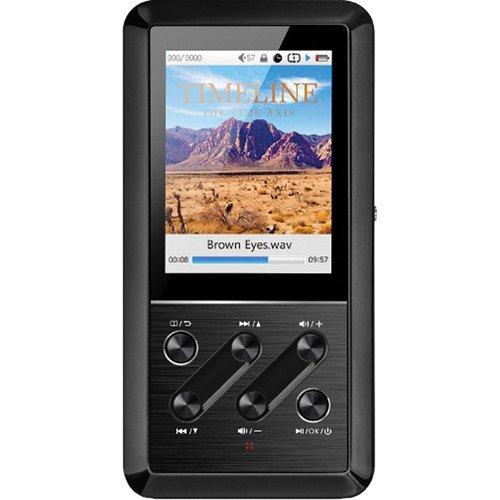
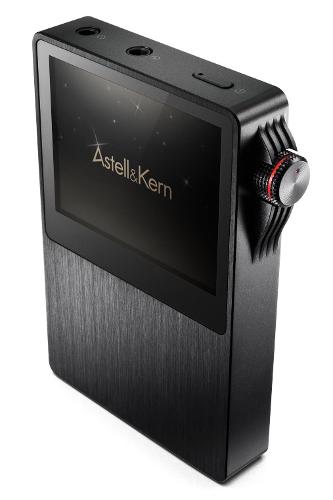


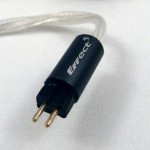
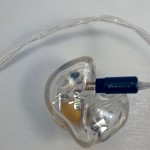
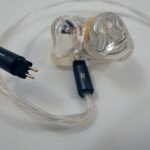
![[Apollo] IEM Upgrade Cable by Effect Audio](https://cdn.head-fi.org/a/4355113_thumb.jpg)




